
Please install a more recent version of your browser.
7 March 2022
7 minutes read
From 24 to 28 March 2022, Flanders DC will again be attending Maison&Objet in Paris, together with Wallonie-Bruxelles Design Mode (WBDM). Under the banner 'Belgium is Design', eleven young Belgian design brands will present their new products on a joint stand.
The January edition of the Paris design fair Maison&Objet was postponed due to corona and will now take place from 24 to 28 March 2022. Belgium is Design presents the work of eleven designers and companies at a group stand. Ana Maria Gomez, Havani and Pascale Risbourg were also there two years ago. You'll discover a lot of textile with Christoph Broich Home Project, Design for Resilience, Fabric Fabrik and Kim Vande Pitte. Atelier Luxus, Luminello, Pierre-Emmanuel Vandeputte and Stan Editions complete the list. We had a word with the Flemish participants.
Christoph Broich took part in the September edition of Maison&Objet on his own. Christoph Broich Home Project offers a contemporary take on interior design. Each cushion, plaid and sports towel is made according to a constantly evolving and instinctive artistic process. An interplay of layered fabrics, thermofixed pleats and vibrant colours create experimental designs. Each piece is carefully folded, fixed and printed by hand, and it is precisely the small imperfections that make them flawless. The towel collection is quick-drying and antibacterial and a lightweight for on the go.
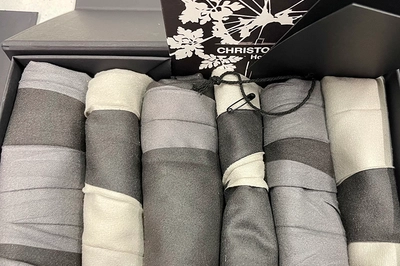
Sports Towel Box, Christoph Broich
Handcraft and uniqueness are important aspects in your work. Do you produce yourself?
We print everything ourselves and want to continue to do so in the future. The stitching is outsourced to a custom company. We will certainly never go for digital printing, because during the printing process new creations are created all the time. That is too important in our design process.
You come from the fashion sector. Do you see essential differences between the fashion and design sector?
The fashion world works with collections, which are seasonal. Design, on the other hand, is permanent. That is what attracts us to it. We would like to design for the project market and develop ideas in cooperation with others.
What did you learn from your participation in September?
The location of our stand was not good in September because it was not on the red carpet, which is very important. We had also bet on selling our cushions, but that was the wrong choice. We now know that we should be aiming more at the project market.
Fabric Fabrik is a product and textile design studio founded by Katrijn Respeel in 2021. The Fabric Fabrik objects embody a combination of art and design. Playful and colourful designs, picked up from daily life, are transformed into vibrant, colourful design objects. All the carpets, stools and framed works are hand-tufted and finished in Katrine's workshop in Ghent. The carpets and framed works are made in editions of ten. Custom-made, unique pieces are also an option.
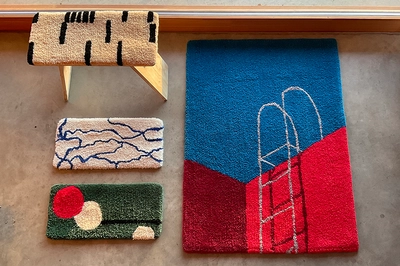
Stool Rugs, Tapit Pool, Fabric Fabrik
You grew up in a creative family. Your father, Rudi Respeel, is a designer. Was there any other option in your life than designing?
Probably not. My sister and brother are also creative. As a child, we were regularly asked to help in my father's studio. I did art-humaniora, later I studied liberal arts at the Royal Academy of Fine Arts in Ghent. In time, the emphasis shifted to design. I took a course in furniture upholstery, where I learned how to stitch and work with textiles.
Why the choice for hand tufting?
During the first lockdown, I started punching by hand. With a hollow punch needle, where your thread runs through, you push the thread through the fabric base. This creates a small loop at the back. In search of more efficient methods, I discovered hand tufting and became addicted to it. The cost of a machine is quite low. For now, I still do all the tufting myself. In time, I may be forced to call on larger workshops in Europe. But I want to keep making all prototypes myself, no matter what. The direct contact and choosing the colours is so important.
Where do you hope to be in a year's time?
I definitely want to expand. At the moment my studio is in the attic. I would like to rent a big one that I can share and where I can work with other creative people. I now also give workshops, for which I also need space. At the moment my customers are mostly private persons. They discover my work through Instagram and on the website of Ik Koop Belgisch (I Buy Belgian) and I also have my own webshop. My work is also in shops in Ghent and Amsterdam. I expect Maison&Objet to respond mainly from shops, but I am also open to projects.
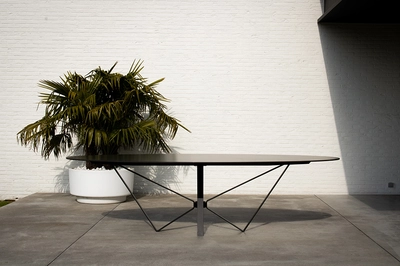
Papillon, Havani
Two years ago, Frederic Haven launched a collection of luxury design tables under the name Havani. The Belgian company, itself a specialist in natural stone, has joined forces with local family businesses, each of which has specialised in a particular material for generations. Each table component is produced by hand. This method not only offers the highest quality, but also makes it possible to customise each table with an exceptional number of material, colour and finish combinations. Even the shape and size of the tables can be adapted to any space. The tables are suitable for both indoor and outdoor use.
How has Havani evolved?
The tables have become much more beautiful, we have refined them. We now work with a special brass lacquer and use more exclusive materials. Originally, almost everything was made of quartz stone. We are increasingly presenting ourselves as stone experts. We will now also launch a new model with ceramic plates, for a slightly lower segment. But we continue to focus on the top segment in our communication.
How did sales go in times of corona?
Due to the crisis, the plan could not be implemented. We went downhill economically, with a 40% drop in sales. But after all the investments in the past two years, we can still speak of a profitable company. We sell mainly through architects. Our tables are in about five shops. Originally we worked mainly B2B, but due to the lockdown that was no longer possible. That is why we now focus more on private sales, which we reach via Google, among other things. Due to an update of the Iphone, our publicity no longer reached our target audience via social media. Trade fairs are also very important to us.
Were you satisfied with your first participation two years ago?
Through our presence at Maison&Objet we reached customers in Belgium, Spain, France and Italy. Later on we also reached customers in the Netherlands and Germany. Especially Papillon, the iconic model by Havani, was a hit.
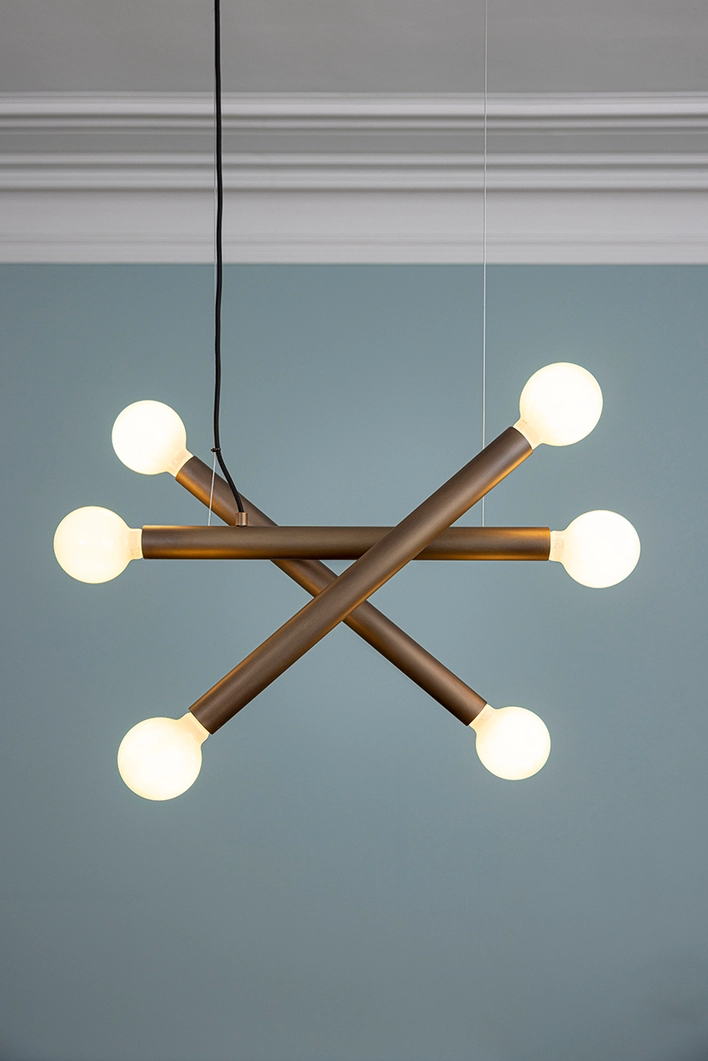
Teola, Luminello
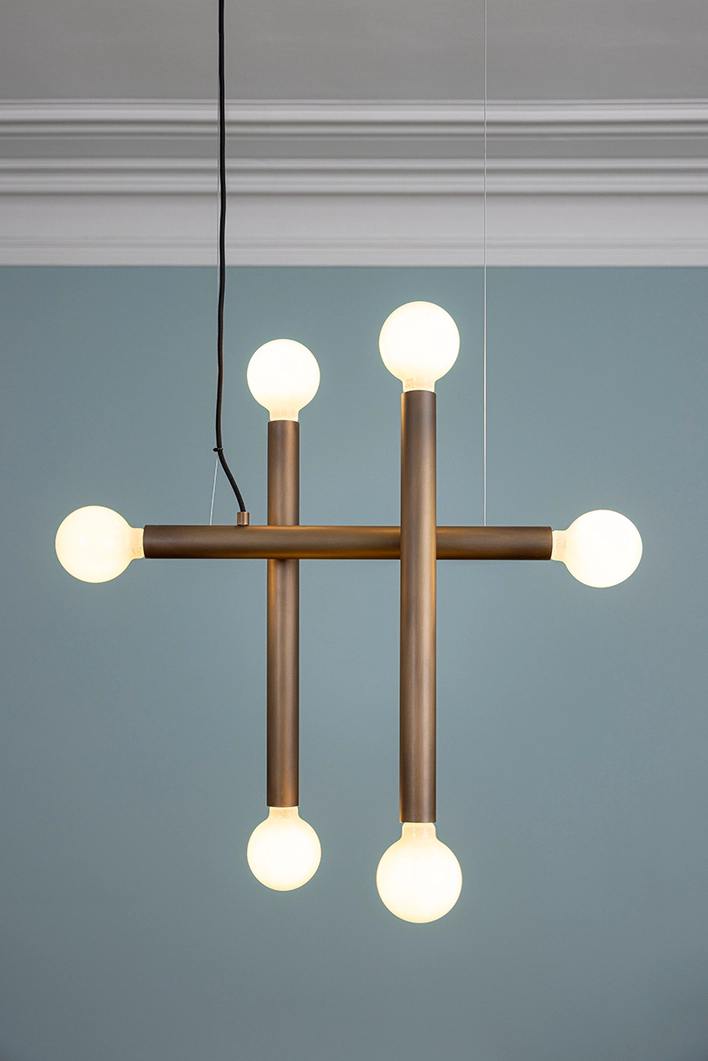
Sven Algoet has been designing and making lighting under the name Luminello for ten years now. The business is the story of a boy from a small village, who had big dreams and wanted to go his own way. Luminello distinguishes itself by choosing durable materials with a long lifespan: copper, brass and borosilicate glass (also known as Pyrex) are raw materials that hardly wear out. The designs are characterised by a clean, simple and elegant style, in which nature is a huge source of inspiration.
You designed your first lamp at the age of 14. Yet you only started designing and producing from your own brand much later?
I grew up in the middle of nowhere, where there was not even a baker or a butcher. At that time, studying design was not an option. Now everything is much more accessible. After studying electronics, I worked for twenty years for other companies. When BTicino, an Italian manufacturer of switches and home automation, where I had been working for ten years, was taken over, I was offered to leave with a fat envelope. I knew that money was needed to start up a company. It seemed the ideal moment. We still invest our profits in the company to continue growing.
What have you learned in those ten years?
When designing, I always start from the technical side, a logical choice given my background. Good assembly and easy installation are important. Durability remains an important aspect. Copper, brass and Pyrex are materials that do not decay. Many producers have switched to using aluminium, which they now manufacture in China or other Asian countries. All our suppliers are European. Honesty is important for consumers. We also extend sustainability to packaging and printing. Everything is handmade and we do not use lacquers or paints. The colour of the fittings is obtained by working brass with an oxidising layer according to traditional methods. We only use plastics when required by law. Incidentally, we have just signed a sustainability charter with a customer. Last year, we had only one return, probably due to incorrect installation. That says a lot about the quality of our products.
What do you expect from Maison&Objet?
Currently our export is negligible. We have already had some projects in France and the Netherlands. Our products were presented in a shop in Luxembourg. For now we aim at a very diverse audience, both the project market and retail are welcome. We are ready for Maison&Objet. We have a new catalogue and our online platform is fully refined. All products are available, with a stock of three months.
Stan Editions, founded by Stan Verstraete, is a young design brand that develops refreshing products, sometimes in cooperation with other designers and creatives. The first product, Candl Stacks, is the result of the search for a new way to use candles. Inspired by the increasing offer of 'sculpted candles', Stan Editions developed a candle sculpture during the first lockdown: a tower of candles that can be stacked, dismantled and rebuilt in endless ways.
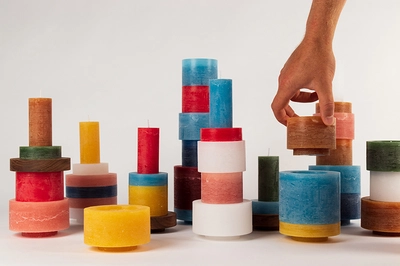
Candle Stacks, Stan Editions
Stan Editions can be found in many shops in Belgium and some abroad. In which markets do you see growth?
We would like to enter the German and Dutch markets. Japan is also a goal. We distribute our products in the US, Switzerland and the UK. We see our products mostly in design shops, concept stores and museum shops. Everything is currently also offered on sales platforms. But in the future, we will also see the various products offered in very different shops.
How did your first product come about?
I was trained as a business engineer and graduated from Solvay in Brussels. I see myself more as an entrepreneur than a designer. With our first product, I want to show that I know how products have to be marketed. Stan Editions was created in cooperation with my mother Isabelle Vermast. She is the creative force behind communication agency Canjotto, which is active in design, fashion and the cultural sector. She has an eye for colour and form and knows how to match this with the commercial side. She also helps me with the communication.
Are there already plans for next products?
We will now launch a new product in ceramics. It is a collaboration with an artist and a manufacturer in Portugal. Another project is a lamp, where we will only act as distributor. Working with young designers is inspiring, we complement each other. I like to think together with designers. But I also like to sell.
Are you visiting Maison&Objet? Then be sure to drop by the Belgium is Design stand! You can find us in hall 7 - Signatures / stand A40-B39.
Cookies saved